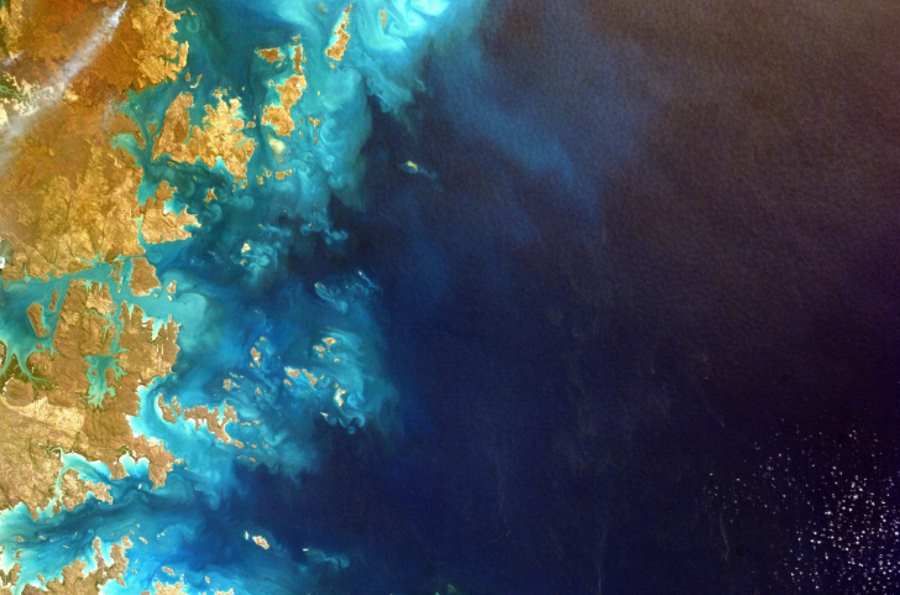Oceans are changing their color
Change in the color of the oceanów is likely to be imperceptible to the human eye, although this does not mean that it will not be noticed by sensors mounted aboard satellitesóin monitoring the Earth. At the heart of this phenomenon are small marine microorganisms, called phytoplankton, whichóre crucial to oceanic food webs and the global carbon cycle – and being sensitive to temperature wód oceanic.
The color of the ocean changes from green to blue, depending on the type and concentration of phytoplankton or algaeóin a given area. A dark blue ocean usually means there is little phytoplankton in the waters. Green, on the other hand, indicates that the waters in a particular area contain significant amounts of these marine microorganismsów. This is because water absorbs almost the entire spectrum of light, except blue, który is reflected. But if there are significant amounts of phytoplankton in the waters, który contains chlorophyll, it absorbs mainlyównie blue light, and reflects green light.
Experts are convinced that the change in the temperature of the oceanów will also change the distribution of phytoplankton. As a result, waters in the subtropics and temperate regions will become even bluer, due to the reduction of phytoplankton. Meanwhile, colder waters near the póNorth and South polesów will take on a greener color.
Previous studies have already shown that with global warming and rising temperatures, the ocean’sów will decrease the amount of phytoplankton in many places. A new study published in the journal „Nature Communications” models the likely impact of these changes on the color of the oceanów and the planet as a whole.
Phytoplankton plays a huge role in the oceans. Oprócz converting sunlight into energy and absorbing carbon dioxide, these microorganisms are the lowest rung in the food chain of marine creatures. The redistribution of phytoplankton points to profound changes in the planet’s ecosystem, które will affect many species ofów living in the oceans.
– We found that it will change the color of the oceanów. The changes are unlikely to be so large that the human eye will notice, but sensors will certainly be able to detect them – said główna author of the publication Dr. Stephanie Dutkiewicz of the Massachusetts Institute of Technology (MIT). – And it is likely to be one of the first signalsóin warning that we have changed the ecology of the ocean – she added.
Scientists stress that these changes are an indirect effect of climate change. Global warming is affecting the temperature wód ocean, which changes the amount of available food for phytoplankton. RóFew computer models suggest that there is likely to be a reduction in the total amount of phytoplankton in the oceans.
Dutkiewicz acknowledged, however, that it may take several decades before scientists begin to accurately document the role that climate change is playing in this evolution. She added that paying close attention to changes in the color of the oceanów may be the first indicationóin on the transformation of ecosystemów.
The study authors created a climate model thatóry projects changes in the oceans, by the end of this century. The model was based on m.in. o satellite observations, including optical ones. – Satellites are our watchdogs. They are the ones that will alert us that not only the amount of phytoplankton in the ocean is changing, but also that the type of phytoplankton is changing – Dutkiewicz pointed out.
Syndromeó³ modeled what will happen to the oceans at the end of this century if the world warms by 3 degrees Celsius. – RóThe difference in color inód oceanic areas will be visible in halfóin the occupied oceans. These changes are potentially very serious. RóThe different types of phytoplankton absorb light in róTheób, and if climate change shifts one phytoplankton community to another, it will change the róalso types of food chains,” she added.
